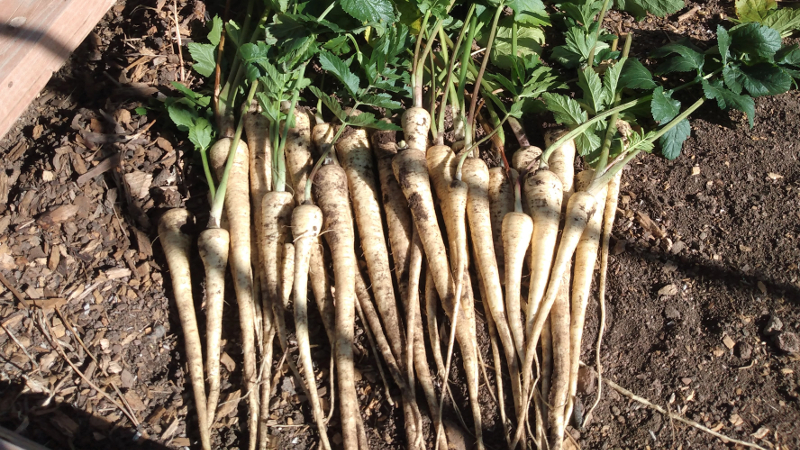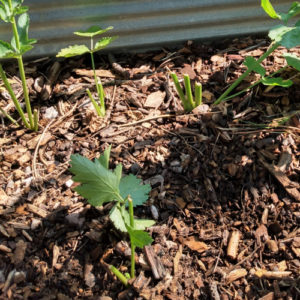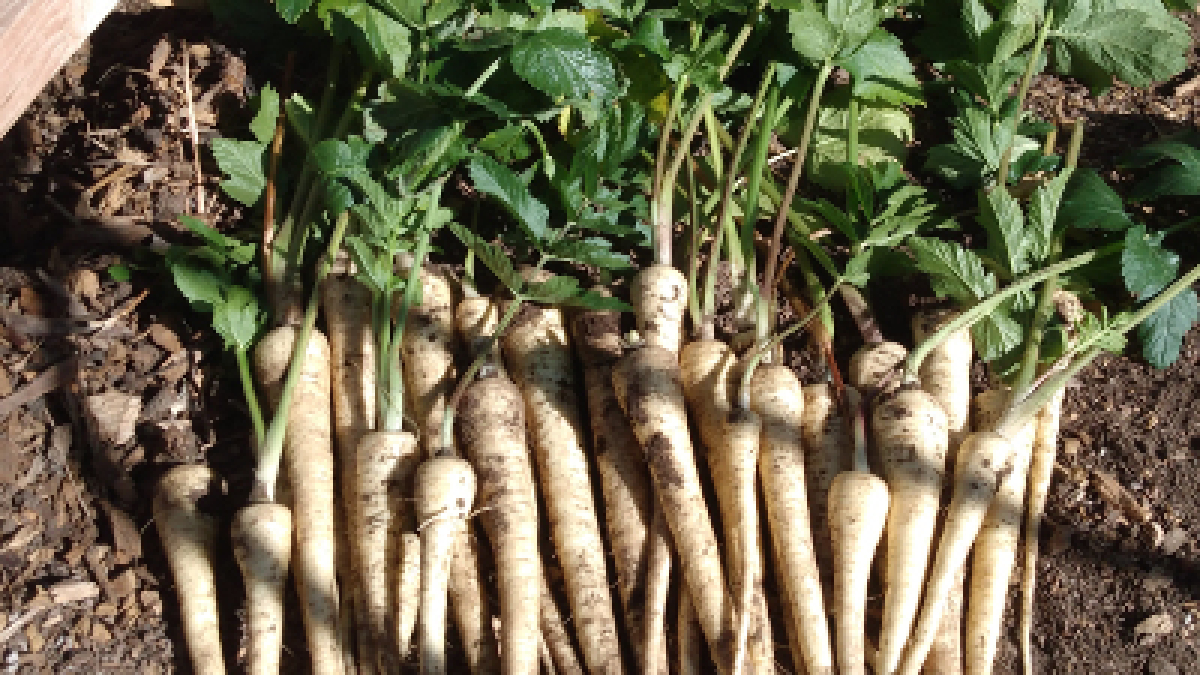PARSNIPS

2020 was our first year to grow parsnips here at 9,000 ft, and have been part of my garden ever since. If you’ve never tried them, you don’t know what you’re missing. They are DELICIOUS sauteed with a little butter.
As with most root vegetables, they did very well here. Gladiator F1 (110 Days) seeds were sown in the ground May 15, and harvested October 24, 181 days after direct seeding. Some could have been harvested sooner, I’m sure, but I typically leave my root vegetables in the ground until I think it might freeze too much to dig them out. Parsnips can handle the snow or frost without difficulty, in fact I’ve read that the frost will help sweeten them up.
In my quest to start saving seeds, I’ve grown White Spear OP parsnips the last couple of years, and they do just as well as the hybrid Gladiators. Since they are biennials and produce seeds their second year, I saved a couple of parsnips from the first summer, replanted them in the spring the following spring, and that fall I was able to harvest GOBS of parsnip seeds, which I will be planting the spring of 2024.

Parsnip tops damaged by pack rats.
These parsnips (left) sustained some damage from the pack rats chewing off their tops, but they survived, and most that were planted were harvested, as shown above.
HIGH ELEVATION GROWING TIP: PARSNIPS
Parsnips are definitely something to grow in your high elevation garden. They do very well, aren’t bothered by frosty cold fall weather, keep a long time in storage and they’re DELICIOUS! Sow seeds directly in the ground a couple of weeks prior to your average last frost date, mulch them, water them, and leave them alone. Harvest them just before the ground freezes in the fall and they will keep all winter in the cold closet/root cellar.
PARSNIP VARIETIES GROWN
Gladiator F1 (110 Days) | DTH: 181 or less
White Spear OP (120 Days) | DTH: 173 or less
- Laurie
- Revised January 2024

